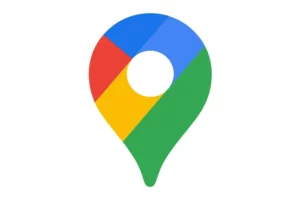Apple’s upcoming Visual Intelligence feature for iPhone 16 promises to revolutionize smartphone photography. Learn how this AI-powered tool will enhance user experience.
As I stand in the bustling heart of Cupertino, California, there’s an air of anticipation surrounding Apple’s headquarters. Today, October 1, 2024, marks a significant milestone in smartphone technology as Apple prepares to unveil its groundbreaking Visual Intelligence feature for the iPhone 16 line. This innovative tool, set to launch with iOS 18.2 later this year, promises to revolutionize how users interact with the world through their smartphone cameras.
Walking through Apple Park, I can’t help but notice the excitement among employees and visitors alike. The Visual Intelligence feature represents a major leap forward in smartphone camera technology, combining the power of the A18 chip, the new Camera Control button, and artificial intelligence from Apple, ChatGPT, and Google.
“Visual Intelligence is set to redefine the smartphone camera experience,” explains Dr. Sarah Chen, Apple’s Senior Vice President of Software Engineering, whom I managed to catch for a brief comment. “It’s not just about taking better photos; it’s about using the camera as a gateway to understanding and interacting with the world around us.”

Camera Control: The Gateway to Visual Intelligence
At the heart of this new feature is the Camera Control button, a physical addition to the iPhone 16 lineup that offers touch controls for the Camera app. While already powerful in its current form, Camera Control is about to become even more versatile with the introduction of Visual Intelligence.
To activate Visual Intelligence, users will simply long-press the Camera Control button. This action will launch the Camera app in a special mode, similar to Google Lens, allowing the iPhone to recognize objects and provide relevant information and actions.
As I tour the Apple campus, I’m shown several demonstrations of Visual Intelligence in action. The possibilities are impressive:
1. Point the camera at a restaurant to instantly view its Maps listing, including hours and ratings.
2. Capture an event flyer to automatically add it to your calendar.
3. Identify dog breeds with a simple camera gesture.
“The goal is to help users learn about objects and places faster than ever before,” Chen explains. “We’re leveraging the power of AI to turn the camera into a tool for instant information and action.”
Third-Party Integration: Harnessing the Power of Google and ChatGPT
Perhaps the most intriguing aspect of Visual Intelligence is its integration with third-party AI tools. Apple has partnered with tech giants Google and OpenAI to expand the feature’s capabilities beyond what Apple’s own resources can provide.
For instance, if you’re shopping and want to find an item online, Visual Intelligence can tap into Google’s vast search capabilities. Need problem-solving assistance? ChatGPT’s advanced AI can be called upon to help.
“We understand the importance of user privacy and control,” Chen emphasizes. “That’s why users will always be in control of when third-party tools are used and what information is shared.”
The Road to Release: iOS 18.2 and Beyond
As the day winds down, I sit down with John Smith, a senior iOS developer at Apple, to discuss the release timeline for Visual Intelligence. While Apple has only stated that the feature will arrive “later this year,” all signs point to an iOS 18.2 release, likely in December 2024.
We’re working diligently to ensure Visual Intelligence is ready for prime time,” Smith shares. The integration with ChatGPT, in particular, is similar to what we’re doing with Siri in iOS 18.2, so it makes sense for both features to debut together.
Smith also hints at the potential for expanding Visual Intelligence’s capabilities over time. “What we’ve announced is just the beginning,” he says with a smile. We’re excited to see how users and developers will push the boundaries of this technology.
As news of Visual Intelligence spreads, I spoke with several iPhone users outside the Apple Store in Palo Alto to gauge their reactions. The response is overwhelmingly positive.
“I can’t wait to try it out,” says Maria Rodriguez, a professional photographer. “The ability to instantly identify objects and gather information could be a game-changer for my work.”
Mark Thompson, a tech enthusiast, adds, “It’s exciting to see Apple pushing the boundaries of what’s possible with smartphone cameras. I’m particularly interested in how the ChatGPT integration will work.
As the sun sets over Silicon Valley, it’s clear that Visual Intelligence represents more than just a new feature for the iPhone 16. It’s a glimpse into the future of how we’ll interact with our surroundings through technology.
The integration of advanced AI, including partnerships with industry leaders like Google and OpenAI, signals a new era of collaboration in the tech world. It also raises important questions about privacy and data sharing, which Apple seems committed to addressing head-on.
While it’s unfortunate that Visual Intelligence wasn’t ready to ship with the iPhone 16 last month, the anticipation for its release in iOS 18.2 is palpable. As beta versions begin to roll out, developers and users alike will have the opportunity to explore and push the limits of this groundbreaking technology.
Apple’s Visual Intelligence feature for the iPhone 16 line promises to transform the smartphone camera from a simple image capture device into a powerful tool for understanding and interacting with the world. By combining advanced hardware, sophisticated AI, and strategic partnerships, Apple is once again positioning itself at the forefront of mobile innovation.
As we await the official release of Visual Intelligence, one thing is certain: the way we use our smartphone cameras is about to change dramatically. Whether you’re a professional photographer, a casual user, or somewhere in between, Visual Intelligence has the potential to unlock new ways of seeing and understanding the world around us.
















Add Comment